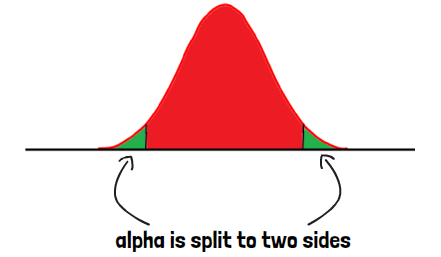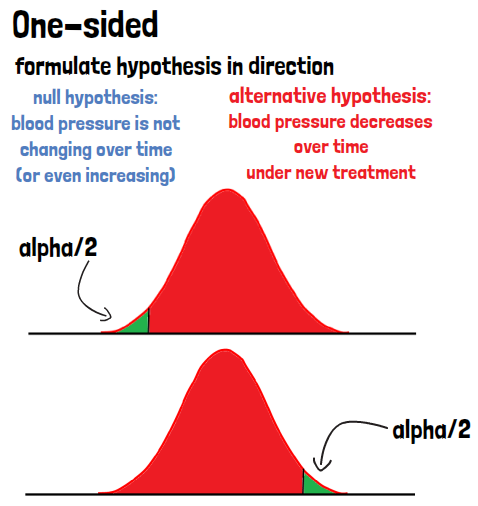When applying a statistical test, there are always two hypotheses as a basis. The null hypothesis describes the non-favorable scenario, where the investigational product would have no impact or a negative impact on the outcome measured. It is this hypothesis that the investigator wants to reject in favor of the alternative hypothesis. The alternative hypothesis is the one describing what wants to be shown. Of importance is, how the hypotheses are defined. Here is when biostatisticians talk about one- sided and two-sided hypothesis testing.
One-sided testing is the case when the hypothesis is formulated in a certain direction, for example: The blood pressure decreases over time with the new treatment. This would be the alternative hypothesis, stating what wants to be shown. The null hypothesis as the counterpart would state then that the blood pressure is not changing over time or (to cover all cases here we should add) even increases. It also has an impact on the type 1 error and therefore the p-value. A directed hypothesis is checking the data only in one direction for the fulfillment of the goal, where alpha half is applied on that side.
The formulation of the hypothesis is crucial here to make sure that the correct test procedure is applied under the assumed direction of the effect. The conclusions to be drawn from the test results in case of a one-sided tests are limited though.
A two-sided test is a non-directional hypothesis test. It is used when the research question is asking for a general change without specifying in which direction. This implies of course that from a significant result it cannot be derived, weather the treatment was better or worse, only that it changed significantly. To clarify in which direction the change was given, point and interval estimators can be applied. This two-sided testing therefore yields more information and allows for more precise interpretation of the results.

If you are interested in a visual presentation of this topic, please feel free to follow us on our GCP Mindset YouTube channel! If you would like to know more about how we could implement statistics in your clinical trial, send us a mail to statistics@gcp-service.com.






